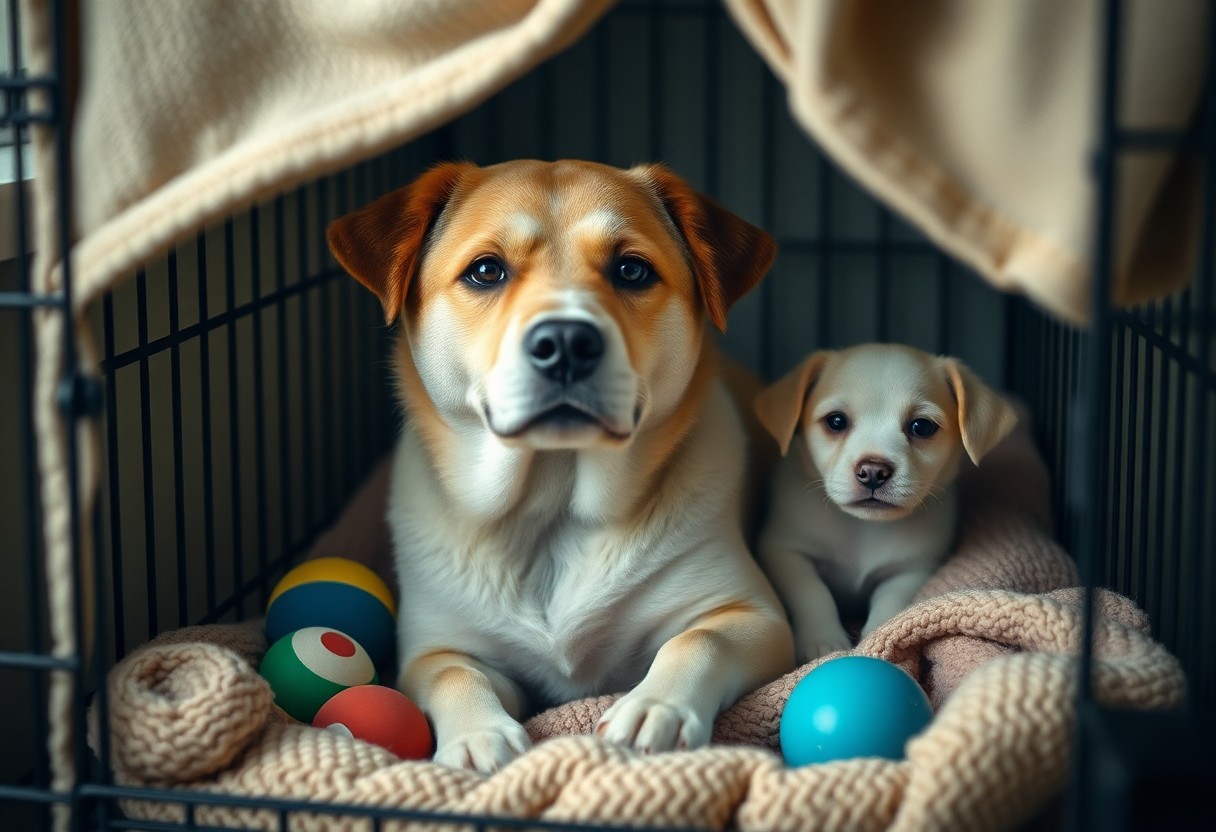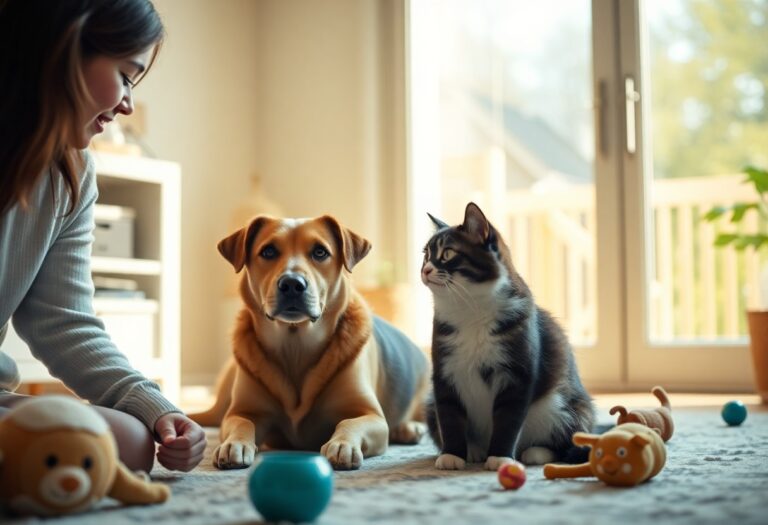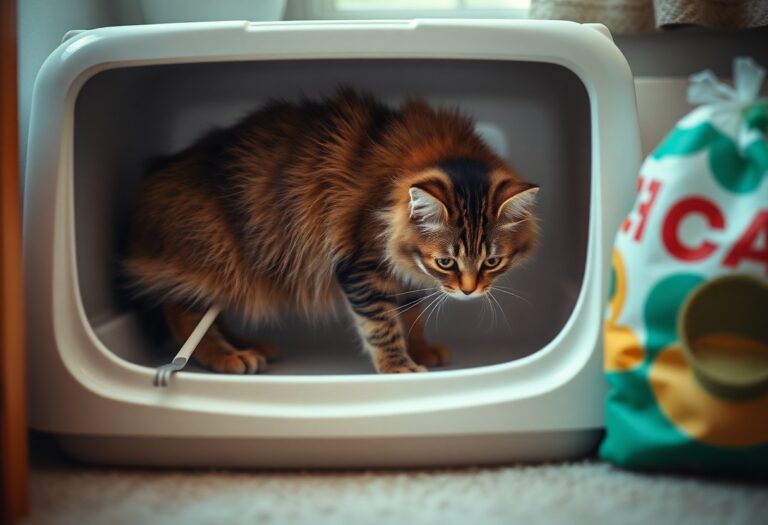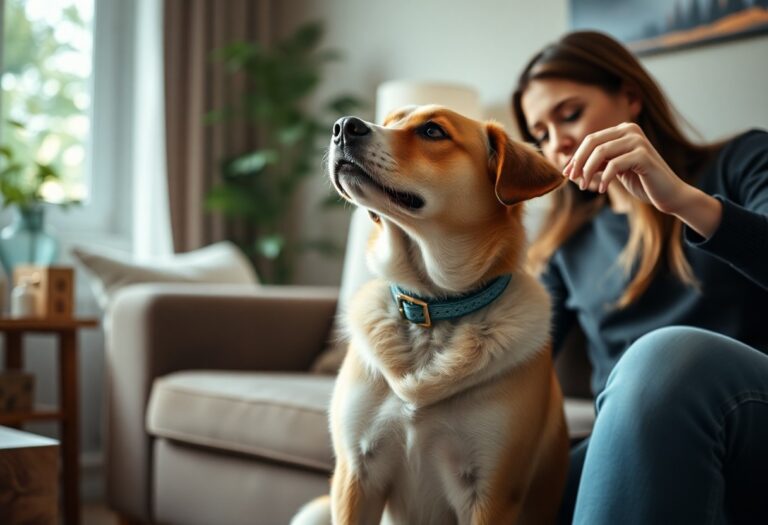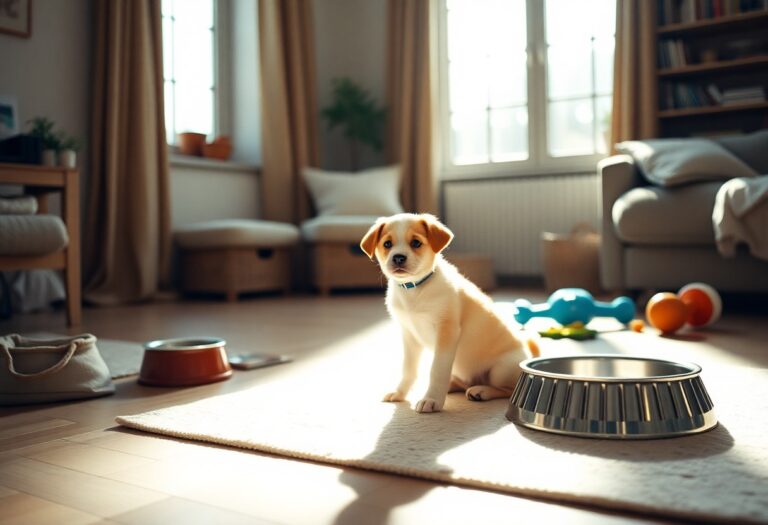Many dog owners underestimate the benefits of crate training, a method that can lead to a happier and healthier life for both you and your furry companion. By introducing your dog to their own personal space, you can help reduce anxiety, prevent destructive behaviors, and create a safe environment for them when you’re not around. Additionally, a properly trained dog is less likely to engage in dangerous habits, like chewing on electrical cords or ingesting harmful substances. Explore how crate training can enhance your pet’s well-being while giving you peace of mind.
The Psychology of Crate Training: Building a Safe Space
Understanding Canine Denning Instincts
Your dog is a descendant of wolves, and just like their wild ancestors, they possess an innate denning instinct. This instinct drives them to seek out small, enclosed spaces where they can feel secure and protected. By introducing a crate, you’re vitally creating a modern-day den that can fulfill those natural urges. A well-chosen, comfortable crate can serve as your dog’s personal sanctuary, reducing anxiety and promoting a sense of safety within your home environment. When dogs perceive their crate as a den-like space, they often feel calmer, happier, and more relaxed.
Creating a Comfort Zone for Your Dog
Benefits Beyond Housebreaking: Crate Training’s Many Perks
Enhanced Behavior and Reduced Anxiety
Utilizing a crate can significantly enhance your dog’s behavior and help reduce anxiety. When you crate train, you provide a safe space for your furry friend, which can create a sense of security. Many dogs thrive in environments that give them boundaries. For example, a dog that previously exhibited destructive tendencies when left alone may become calmer and more content when given a cozy crate to retreat into. Crates can also serve as a sanctuary during stressful situations, such as thunderstorms or fireworks, helping to minimize anxiety levels.
Moreover, crate training can help shape your dog’s habits over time. By regularly using the crate for short periods, you reinforce the idea that it’s a positive place associated with comfort and rest. This technique can be especially beneficial for puppies who are learning to feel safe and secure in their new environment. As a result, you might find that your canine companion displays improved patience and less fearfulness in various settings.
Facilitating Travel and Veterinary Visits
Crate training can significantly ease the stress of travel and veterinary visits for both you and your dog. For many pets, unfamiliar environments can lead to anxiety and confusion. When your dog is already accustomed to a crate, the transition to car trips or veterinary appointments becomes smoother. Familiar smells and the cozy nature of their crate can provide comfort, transforming what could have been a fraught experience into a calmer situation.
Using a crate during trips ensures that your dog remains safe and secure, preventing distractions while driving. In fact, some studies have shown that dogs transported in crates experience fewer injuries in the event of sudden stops compared to unrestrained pets. Additionally, many veterinary clinics and boarding facilities prefer or even require that dogs be crated for safety. Having your dog crate-trained not only meets these expectations but also minimizes any possible distress for your pet during these necessary events.
The benefits of crate training extend far beyond housebreaking, with a solid foundation for a well-adjusted, secure, and happy pet. This training method not only helps your dog settle into a routine but also encourages good behavior both at home and on the go. As your dog learns to view the crate as a personal haven, you’ll likely see a reduction in anxiety levels, making travel and vet visits significantly less stressful for both of you.
Common Misconceptions: Debunking Myths About Crate Training
Crates as Tools for Punishment vs. Positive Reinforcement
Your perception of crates might be clouded by the belief that they are simply tools for punishment, evoking harsh training methods from the past. However, crates should never be used as a form of discipline. Instead, they are effective tools designed for security and comfort. Think of your dog’s crate as their personal den—a safe and cozy space where they can retreat when they’re feeling stressed or overwhelmed. This approach to crate training involves positive reinforcement, where you encourage your dog to see the crate as a place of calm and relaxation rather than confinement. Using treats, praise, and toys can create a positive association, turning what some view as a prison into a sanctuary.
When you shift your mindset from viewing the crate as a punishment to recognizing it as a potential haven, the transformation in your dog’s behavior can be remarkable. Dogs naturally seek out enclosed spaces for safety; therefore, introducing the crate as a welcoming environment can significantly enhance your training efforts. Over time, your pup will willingly enter the crate, often seeking it out during stressful circumstances as a means to self-soothe.
Addressing Concerns of Isolation and Neglect
Worries about isolating your dog through crate training are common, but many dog owners fail to understand that crate training is about balance. You should always strive to ensure your dog gets plenty of exercise, mental stimulation, and social interaction throughout the day, making crate time just one component of a well-rounded routine. A properly executed crate training program won’t leave your dog feeling abandoned; rather, it provides a safe place for them to relax while you go about your daily tasks.
The misconception that crates foster neglect overlooks the opportunity to create a structured environment. A well-trained dog can spend short periods in their crate without experiencing anxiety, due to their understanding that you will always return. By gradually increasing the time your dog spends in the crate, you help them acclimate, fostering independence and reducing the likelihood of separation anxiety. A well-designed crate routine often leads to a dog that is well-adjusted and comfortable both in and out of their designated space.
Practical Tips for Effective Crate Training
Choosing the Right Crate and Setting It Up
Selecting the correct crate is a fundamental step in the training process. Consider the size and type; a crate should be spacious enough for your dog to stand, turn around, and lie down comfortably, but not so large that they feel they have room to eliminate in one corner. Wire crates provide great ventilation and visibility, while plastic crates offer a more den-like feel, which can be especially comforting for young puppies. When setting it up, choose a location that is both quiet and familiar, away from heavy foot traffic, yet close enough to the family so your dog doesn’t feel isolated.
Enrich the crate’s environment by adding a soft blanket or bed, along with safe chew toys to create a positive space. Positive associations are key, so use treats or favorite toys to encourage your dog to enter the crate willingly. Providing access to the crate throughout the day, with the door left open, allows your dog to explore and become familiar with this new personal space.
Developing a Gradual Training Routine
Initiate crate training by allowing your dog to spend short periods inside. Start with just a few minutes at a time while you are at home. This gradual introduction helps to alleviate anxiety and allows your dog to adjust at their own pace. Once your dog is comfortable spending short durations inside, incrementally increase the time they remain crated, always following up with treats and praise upon release to reinforce the behavior.
Incorporating daily routine into crate training can yield positive results. Establish specific times for meals and bathroom breaks, and consistently correlate these with crate time. This structure gives your dog a reliable schedule to anticipate, facilitating smoother transitions into the crate. Consistency in your approach is key; create an environment where your dog feels secure and knows what to expect.
Gradual introductions not only make the process smoother for your dog but also build trust. You’re nurturing their comfort level while reinforcing *good behavior*. As you progress, consistently reward your dog for entering the crate calmly and remaining quiet. Over time, you will witness the crate transform from a simple enclosure into a sanctuary for your pup. Thou can expect a deeper bond with your dog as they begin to view their crate as a safe haven rather than a place of confinement.
Real-Life Success Stories: Transformations Through Crate Training
Case Examples from Everyday Dog Owners
One dog owner, Sarah, struggled with her rescue puppy, Charlie, who had severe separation anxiety. After weeks of chaos, Sarah decided to implement crate training. Within a month, Charlie showed remarkable improvement. He began to see his crate as a safe haven rather than a prison. Sarah gradually extended the time he spent in his crate, using treats and praise. Now, Charlie can comfortably stay in his crate for a few hours when Sarah is away, which has transformed their home into a more peaceful environment.
Another success story comes from Mark, who had a rambunctious Labrador named Max. Mark utilized crate training as a way to manage Max’s destructive habits when left alone. By setting up a cozy crate with toys and a blanket, Max soon learned that his crate was his own personal retreat. After just a few weeks, Mark noticed he could leave Max alone without fear of coming home to shredded furniture. Their relationship has flourished, with Max becoming a well-behaved companion who enjoys his crate time.
Insights from Professional Trainers
Professional dog trainers consistently highlight the benefits of crate training in their practices. For instance, trainer Jessica Lee emphasizes how crate training not only aids in housebreaking but also helps with behavioral issues. She often recounts cases where her clients initially approached crate training with skepticism but later reported significant behavioral improvements in their dogs. “Dogs are naturally den animals,” Jessica explains, “and once they understand the crate is a safe place, their anxiety and fear can subside.”
Close collaboration with dog owners often leads to enlightening results. Many trainers note that incorporating positive reinforcement techniques during crate training can accelerate the learning process. Statistics reveal that dogs trained in a controlled environment like a crate tend to adapt more successfully in various social settings, showcasing less aggression and fear. This controlled exposure helps build a solid foundation for your dog’s training journey.
To wrap up
Considering all points, crate training can serve as an invaluable tool for you as a dog owner. It creates a safe space for your dog, facilitating a sense of security and comfort in their environment. By establishing a routine that incorporates crate time, you can help mitigate behavioral issues such as anxiety and destructive tendencies. The crate becomes more than just a confinement tool; instead, it turns into a haven where your dog can rest, relax, and feel protected, ultimately improving their overall well-being.
Moreover, crate training fosters a stronger bond between you and your dog, as it encourages positive reinforcement techniques that enhance communication and trust. When you successfully implement crate training, you are empowering yourself as a responsible dog owner who understands the needs of your furry friend. By investing time in this training method, you will not only have a well-adjusted pet but will also enjoy more harmonious living conditions at home. Embrace crate training and witness the numerous benefits it can bring for you and your beloved canine companion.

